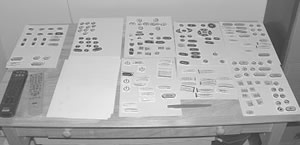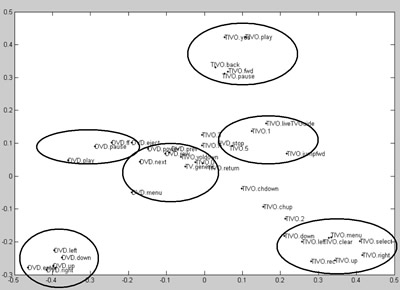APIE Project: Personalized Appliance Control

APIE Project: Personalized Appliance Control |

|
Traditional remote controls typically allow users to activate functionality of a single device. Given that users activate a subset of functionality across devices to accomplish a particular task, it is attractive to consider a remote control directly supporting this behavior. We have conducted qualitative and quantitative research on two promising approaches to creating such a remote control: end-user programming and machine learning. In general, results show that each approach possesses advantages and disadvantages and that neither is optimal. Our next step is a build a mixed-initiative generator that draws on the strengths of both people and ML algorithms.
| An example of the current collection of devices and remotes that users must deal with. | ||
 |
To determine how effectively users could create their own personalized remotes, we provided a variety of buttons and asked them to assemble the interfaces they wanted. | |
 |
Users create non-optimal remotes; they tend to create interfaces that center around devices rather than tasks, and they miss opportunities for macros (single buttons that issue multiple commands). | |
 |
Automatic clustering of commands into tasks, while facilitating the creation of interfaces that center around tasks rather than devices, requires a sufficient density of data before it yields high-quality results. This approach can therefore take too much time. |
O. Omojokun, J. Pierce, C. Isbell, and P. Dewan. Comparing End-User and Intelligent Remote Control Interface Generation. 3rd Interactional Conference on Appliance Design, 2005. A version of this paper will appear in Personal and Ubiquitous Computing.
C. Isbell, O. Omojokun and J. Pierce. From Devices to Tasks: Automatic Task Prediction for Personalized Appliance Control. In Proceedings of 2AD, 2004. A version of this paper appeared in Personal and Ubiquitous Computing.